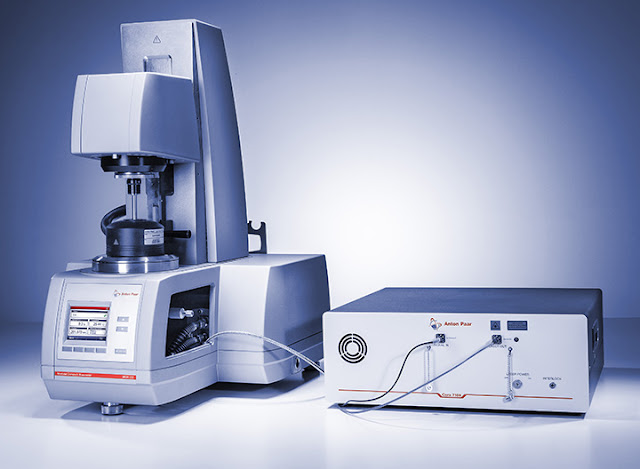Global Raman Spectroscopy Market is Estimated to Witness High Growth Owing to Opportunity for Real-time Process Monitoring and Quality Control
Raman spectroscopy is a spectroscopic technique used to observe vibrational, rotational, and other low-frequency modes in a system. It relies on inelastic scattering (Raman scattering) of monochromatic light, usually from a laser in the visible, near infrared, or near ultraviolet range. The laser light interacts with molecular vibrations, phonons or other excitations in the system, resulting in the energy of the laser photons being shifted up or down. The difference gives information about the molecular structure as each individual chemical entity returns an unique spectroscopic fingerprint. Raman spectroscopy is deployed for non-destructive identification and characterization of chemicals in a variety of applications such as pharmaceuticals, nanotechnology, forensic sciences and art diagnostics.
The global Raman Spectroscopy Market is
estimated to be valued at US$ 1.36 billion in 2023 and is expected to exhibit a
CAGR of 8.0% over the forecast period 2024 to 2031, as highlighted in a new
report published by Coherent Market Insights.
Market Opportunity:
Real-time process monitoring and quality control is estimated to boost the
growth of global Raman Spectroscopy market. Raman spectroscopy provides
benefits of non-destructive and non-invasive characterization of samples. It
can be deployed for in-line and at-line monitoring of critical process
parameters during pharmaceutical, biologics and chemical manufacturing. Raman
spectroscopy helps identify impurities in real-time, enabling timely corrective
actions. This improves product quality and compliance. Its ability to provide
real-time chemical detection and analysis makes Raman spectroscopy suitable for
various quality control applications driving the overall market demand.
Porter's Analysis
Threat of new entrants: Low capital requirement and technological expertise
poses a moderate threat of new entrants in the global Raman spectroscopy
market. However, established players enjoy economies of scale and brand loyalty
that deters new players.
Bargaining power of buyers: Availability of substitutes and fragmented buyer
base increases the bargaining power of buyers in the Raman spectroscopy market.
Buyers can negotiate on price and demand additional services.
Bargaining power of suppliers: Due to the highly specialized nature of components
used in Raman spectroscopy instruments, the bargaining power of a few component
suppliers is high. Suppliers can influence prices.
Threat of new substitutes: Substitutes like infrared spectroscopy offer a low
threat currently due to Raman's greater chemical specificity. However, new
technologies may emerge as substitutes.
Competitive rivalry: The global Raman spectroscopy market comprises many large
and small players competing based on product pricing and performance. Intense
competition leads to pricing pressures and incentives for innovation.
SWOT Analysis
Strength: Raman spectroscopy provides non-destructive chemical analysis
without complex sample preparation. It gives a molecular fingerprint
identification of samples.
Weakness: High installation and maintenance costs. Requirement of trained
operators limits its applications.
Opportunity: Growing application scope in pharma, life sciences, materials
analysis and nanotechnology drives market growth. Point-of-use devices present
opportunities.
Threats: high capital investment and presence of substitute technologies like
infrared spectroscopy.
Key Takeaways
The Global
Raman Spectroscopy Market Size is expected to witness high growth
during the forecast period of 2024 to 2031. The global Raman Spectroscopy
Market is estimated to be valued at US$ 1.36 Mn in 2024 and is expected to
exhibit a CAGR of 8.0% over the forecast period 2024-2031.
North America dominates currently due to extensive research
and commercial activities. Asia Pacific is expected to grow at fastest pace due
to increasing R&D investments.
Key players operating in the global Raman spectroscopy market are Quintiles IMS
Holdings, Inc. (now IQVIA Holdings Inc.), PAREXEL International Corporation,
ICON plc, Covance Inc. (acquired by LabCorp), PPD, LLC. Key players are
focusing on product development and geographical expansion to gain higher
market shares. they are offering low cost portable devices to increase
penetration in process analytical and quality control applications.
Get more insights on this topic:
https://www.insightprobing.com/global-raman-spectroscopy-market-regional/
Check below trending articles on this topic:



Comments
Post a Comment